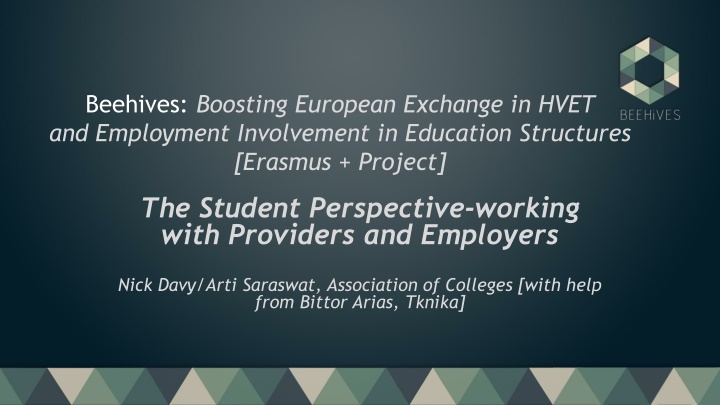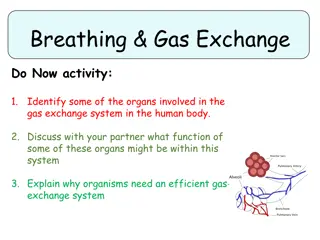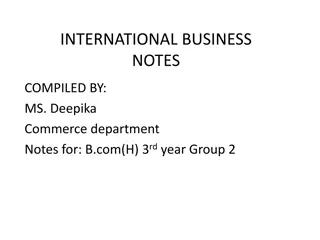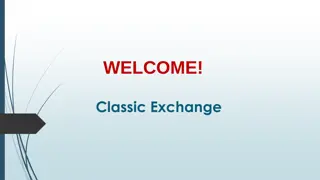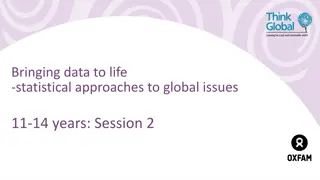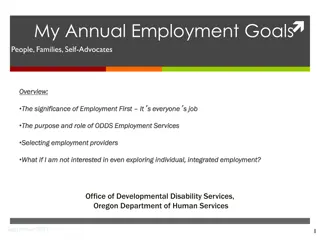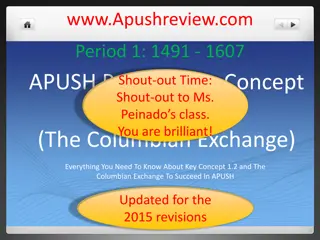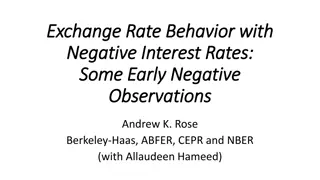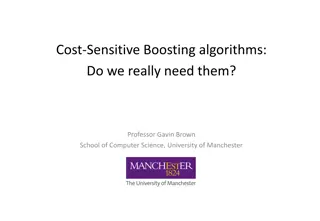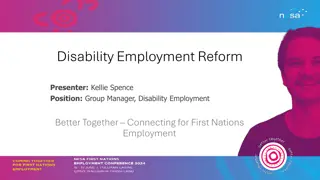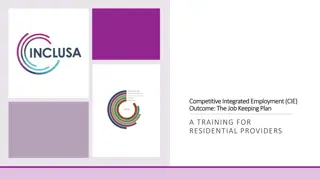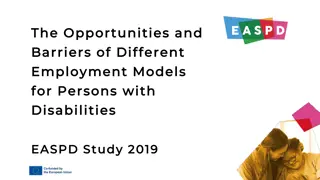Beehives: Boosting European Exchange in HVET and Employment Involvement
This project aims to enhance collaboration between HVET providers, employers, and students to improve student retention and post-graduation employability. It addresses the policy context emphasizing skills development and cooperation between higher education institutions and businesses.
Download Presentation

Please find below an Image/Link to download the presentation.
The content on the website is provided AS IS for your information and personal use only. It may not be sold, licensed, or shared on other websites without obtaining consent from the author.If you encounter any issues during the download, it is possible that the publisher has removed the file from their server.
You are allowed to download the files provided on this website for personal or commercial use, subject to the condition that they are used lawfully. All files are the property of their respective owners.
The content on the website is provided AS IS for your information and personal use only. It may not be sold, licensed, or shared on other websites without obtaining consent from the author.
E N D
Presentation Transcript
Beehives: Boosting European Exchange in HVET and Employment Involvement in Education Structures [Erasmus + Project] The Student Perspective-working with Providers and Employers Nick Davy/Arti Saraswat, Association of Colleges [with help from Bittor Arias, Tknika]
Project Team Event name, Presenter name, Date, Location, Website
Beehives: Aims/Project Website Develop a series of tools and measures collected in a web- based Strategy Matrix Toolbox Ensure that the three apexes of the strategic partnership triangle are able to collaborate more productively and Improve student retention and increase post-graduation employability. https://beehives.de HVET/PHE Country Reports available Event name, Presenter name, Date, Location, Website
Policy Context Lisbon strategy: HE institutions must consider the employability of their graduates, equip them with the skills for public and private sectors, and ensure that the unemployed can improve their skills for work. (2000) EU Modernisation Agenda for Higher Education: reform of HE to meet the requirements of the labour market with emphasis on relevant skills, qualifications and graduates employability. A problem lies in the lack of a strong cooperation, understanding and interaction between HE institutions and businesses. (2011) Higher education should also allow students to acquire skills and experiences through activities based around real-world problems, include work-based learning and, where possible, offer international mobility. Cooperation with employers can allow HEIs to increase the relevance of their curricula and deliver them effectively, and increase opportunities for students to access high quality work-based learning. (update-2017) Event name, Presenter name, Date, Location, Website
Core Concept: The Strategic Triangle The Strategic Triangle Self Development Student / Employee Skills Skills Quality Quality Needs Needs Cooperation Culture Employability Competitiveness Faculty Development Business Development HVET Institutions World of work Needs Education & Training Human Resource Management Quality Skills
PROJECT STAGES Interactive Toolbox Multiplier Events Strategic Matrix of collaboration Implementation Context of Strategic collaboration Initial Proposal Desk Research Expert Group Validation What works & Good practices Information Sheets National Reports Institutions Employers International National Surveys Focus Groups Students Institutions Institutions Policy Paper Employers Employers Students Students
Rhetoric and Reality? All countries in the Beehives project had policies or practices in place to, in theory, fully involve PHE and HVET students in their learning and organisation of that learning. The project worked on the basis that the three key partners providers, employers and students had a broad equitable input into collaborative activities - represented by the concept of the equilateral triangle. Students are the key element that sit in the middle of these strategic partnerships. Student survey responses indicate that partnerships would be more accurately characterised by a scalene triangle, with students representing the shortest, and least effectual side. Event name, Presenter name, Date, Location, Website
What Works - THEME 1: Mission, Strategy, Aims Students unions involved/final year Student representatives part of HEI Senate/governing body Use Alumni networks Learner as an employer Importance of work-based learning Event name, Presenter name, Date, Location, Website
THEME 2: Programme, Curriculum, Course Design Integration of students in research and development projects Practice related to their professional orientation Students working in teams Problem-based learning/pedagogy Event name, Presenter name, Date, Location, Website
THEME 3: Work-based learning and Teaching Work based projects in the workplace - changing/improving practice Scholarship/allowance linked to work-based time Learning objectives (LO) related to practice Joint development of LOs student/teacher/employer Event name, Presenter name, Date, Location, Website
THEME 4: Qualifications, Skills and Competences Encourage entrepreneurship Provide job opportunities through self-employment among students Facilitate possibilities for students to create their own companies Event name, Presenter name, Date, Location, Website
THEME 5: Services, Research and Methods Promote innovation Employers involved in various roles: developer, assessor, expert, supporter and recruiter Involve students in (small-scale) research projects and in R&D Endowed employer sponsored research/professor roles Event name, Presenter name, Date, Location, Website
England Specific: Student Good Practices Careers Advice directly from Employers Work Experience - all types Visits/Tours of employer premises Work-based Projects based on real work based practices Event name, Presenter name, Date, Location, Website
Beehives: Emerging Models Emerging Models of Partnership Working o Basic to Dynamic (A) o Transactional to Transformational (B) Event name, Presenter name, Date, Location, Website
Partnering Maturity Model (A) Basic Fragmented Proactive Dynamic Joint collaboration planning Not at all Ad-hoc Activity based A strategic planing with regular follow-up Shared with defined rhythm+ in-person meetings + Core DNA of Strategic Collaboration Strategic Aim & Objectiives Sharing specific goal and objectives (strategic roadmap) No sharing Ad-hoc No template, rely on handshakes or contracts based on specific deals A collaboration format with policies that regulates all aspects of the relationship Agreement No template A basic template Some structure, give some but do not measure outcome A process that generate lots of leads to others and that measures success Leads Do not give Ad-hoc, no structure Reactive, ad-hoc messaging/campaigns + basic recognition of partners and capabilities National or regional messaging Reactive, only tell when people ask or when an opportunity occurs Fully integrated Marketing within Partner Circles One Effort No Only in the same city Use partnering to gain access to local partners and other regions in the country Strategically use partnering for broader geographical coverage in to the region Geography Only in the same city Partner on a case by case basis when there are opportunities Pre-defined rate of geust lecturers for sharing prcaticial experience resources + Access to pratcial knowledge Rare use of staff exchnage / guest lecturers Rationalized + Integrated Resource Planning covering multiple Competencies Resource Utilization Do 1:1 meetings with partners to understand their needs and expectations and define different partner engagements Proactive measure partner satisfaction and actively collect references for your circle of trust Take both collective and individual responsibility for managing partner relationship Partner Relationship Not at all Individual and single partnership management on faculty Section management, ad hoc based and mutual interest based on single opportunity Multi year collaboration plan together with multiple partners - using strength in combined advanced certifications in order to improve employability of students Readiness and Planing [applies to formal strategic partner programs] Joint strategic initiatives in overlapping areas and joint planning aiming to achive common agreed goals No Readiness or strategic plan / roadmap for collaboration
Partnering Maturity Model (B) Change in Corporate Structure Applied Learning & Training Legal Policies Joint Collaboration Committees Joint Activities Joint Development Collaboration No permanent organizational commitment Decision making power remains with individual organization Strategic Alliance Involves a commitment in the future Decision making power is shared Does not include a change to corporate structure Corporate Integration Decision making power is transferred and regulated Involves changes to corporate control and/or structure including joint development of curriculum Autarc Integrated Strategic Restructuring
Any Questions? BEEHIVES PROJECT - HTTPS://BEEHIVES.DE Event name, Presenter name, Date, Location, Website
This work is licensed under a Creative Commons Attribution ShareAlike 4.0 International License. You are free to: Share copy and redistribute the material in any medium or format Adapt remix, transform, and build upon the material for any purpose, even commercially. The licensor cannot revoke these freedoms as long as you follow the license terms. Under the following conditions: Attribution You must give appropriate credit, provide a link to the license, and indicate if changes were made. You may do so in any reasonable manner, but not in any way that suggests the licensor endorses you or your use. ShareAlike If you remix, transform, or build upon the material, you must distribute your contributions under the same license as the original. The European Commission support for the production of this publication does not constitute an endorsement of the contents which reflects the views only of the authors, and the Commission cannot be held responsible for any use which may be made of the information contained therein. No additional restrictions You may not apply legal terms or technological measures that legally restrict others from doing anything the license permits. Event name, Presenter name, Date, Location, Website
